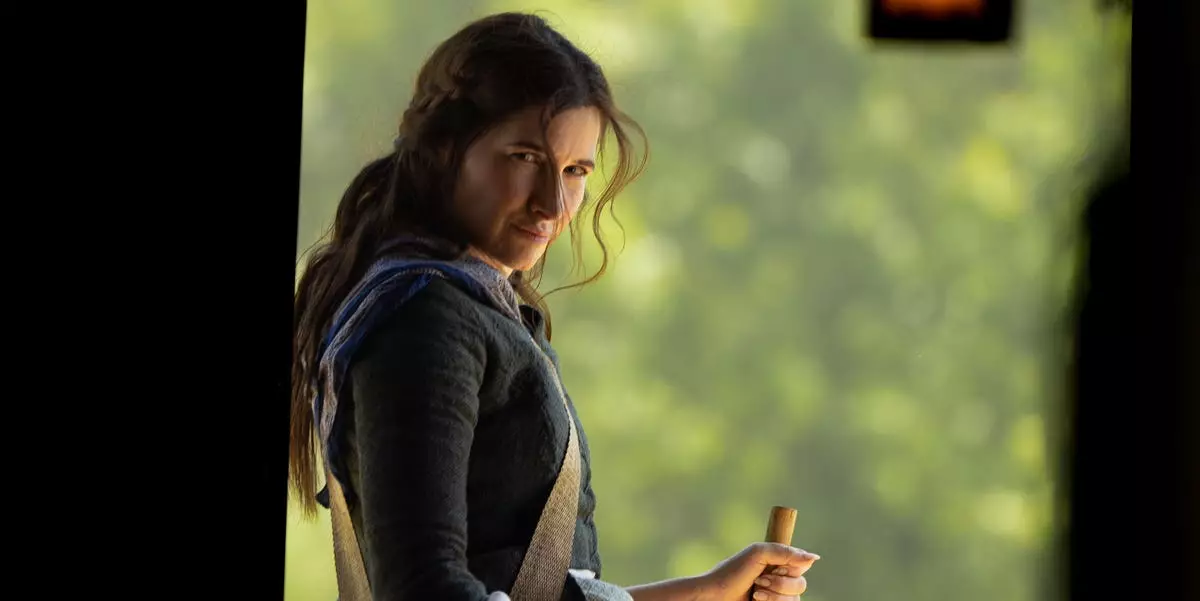For years, the post-credits scene has become a hallmark of the Marvel Cinematic Universe (MCU), a tantalizing treat that leaves fans buzzing with speculation after the credits roll. From the smallest hints at upcoming characters to full-fledged teases of vast story arcs, these scenes embody the interconnected storytelling marvel that is the MCU. Thus, when the finale of the Disney+ series “Agatha All Along” dropped on October 30, its absence was felt acutely by fans and critics alike. Showrunner Jac Schaeffer’s admission that decision was driven from higher-ups at Marvel raises numerous questions about the direction of the franchise and its evolving narrative style.
In her interview with Variety, Schaeffer’s comments not only acknowledge the lack of post-credits scenes but also reflect the complexities of creative decision-making within the vast apparatus of Marvel. “That’s a Marvel decision. I know nothing more than that,” she stated, indicating that the decision was outside her purview and deviated from her creative vision. For someone who reportedly crafted multiple potential tags, this revelation illuminates a crucial component of the modern entertainment industry: the balance between an individual writer’s creativity and the overarching corporate strategy.
The omission of post-credits scenes might suggest a deliberate strategy by Marvel to maintain suspense around future projects. By not giving viewers a peek into the next phase of the MCU, it reinforces a sense of uncertainty that could serve to heighten anticipation for what is to come. Such choices can benefit Marvel in the long run by preserving narrative surprises and denying fans the excitement of predictable setups.
A closer inspection of “Agatha All Along” reveals yet another layer to this decision: the intricacies of the narrative itself. Set as a spin-off from “WandaVision,” Agatha’s character is steeped in complexity, and the absence of Wanda Maximoff raises various implications. Given Elizabeth Olsen’s character’s apparent demise in “Doctor Strange in the Multiverse of Madness,” the potential futures for Wanda or Agatha remain ambiguous, contributing to a pervasive sense of unpredictability. Keeping Agatha isolated in her own storyline without post-credits ties to other Marvel characters reinforces this narrative autonomy.
Interestingly, the introduction of Billy, Agatha’s newfound connection to the Young Avengers, does hint at broader implications without explicitly stating them. Yet, the lack of direct ties to other young superheroes suggests Marvel is still shaping its narrative landscape cautiously. The slow unveiling of new characters like Billy, alongside the likes of Kate Bishop and America Chavez, can form a tapestry of young heroes. By not inserting a post-credits scene to foreshadow collaborations or developments, Marvel conveys a deliberate intent to allow stories to develop organically rather than rush to tie-ins.
However, while this strategic move may make sense from a brand perspective, it runs the risk of alienating die-hard fans who thrive on the prospects of future connections. The community thrives on speculation, and post-credits scenes have long served as a bridge between existing films and those yet to come. The absence of such a tantalizing morsel can breed discontent, as it strips fans of that crucial layer of ingenuity that has characterized much of Marvel’s approach.
Moreover, the more significant concern could lie in Marvel’s reluctance to confirm future projects, leaving fans grasping at straws regarding the paths of beloved characters. As visible talent within the MCU begins to mature and shift, the reliance on existing characters to transition to new narratives becomes paramount. Will these absences in crossover hints lead to disenchantment, or can they be repurposed into excitement for where these journeying heroes head next? It’s a balancing act that Marvel must navigate carefully.
As we move forward, it’s clear that Marvel is dictated by both creative aspirations and strategic considerations. The absence of post-credits scenes in “Agatha All Along” illustrates a phase in storytelling where the emphasis on singular narratives could ride over the wave of interconnectedness that the franchise pioneered. Ultimately, time will tell if this choice pays off, but for now, fans must live in the uncertainty of what Marvel’s decisions mean for the future of its sprawling universe. Disney+ continues to be a fertile ground for storytelling, but for now, we must be patient as we await the next chapter in Marvel’s grand saga.

